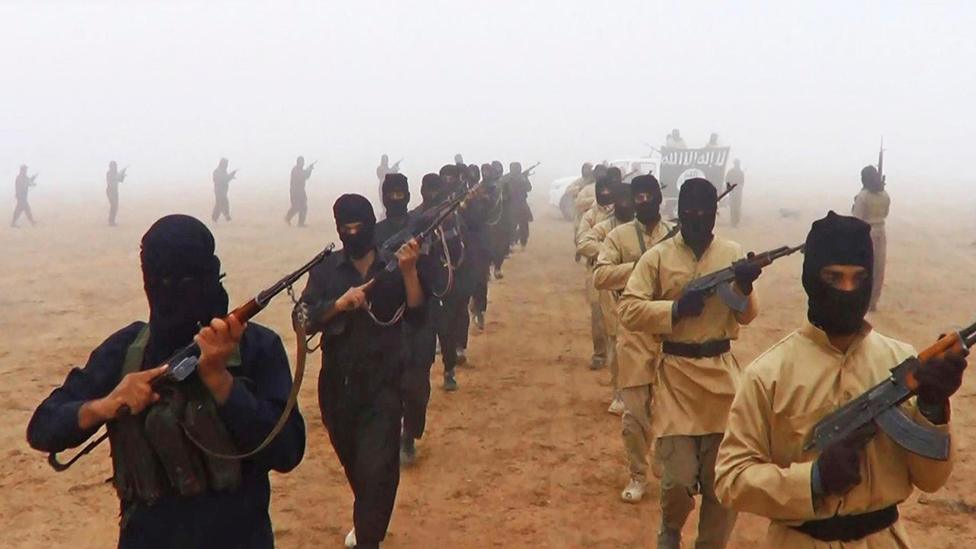Palmyra: 'Mass grave' in recaptured Syrian city
- Published
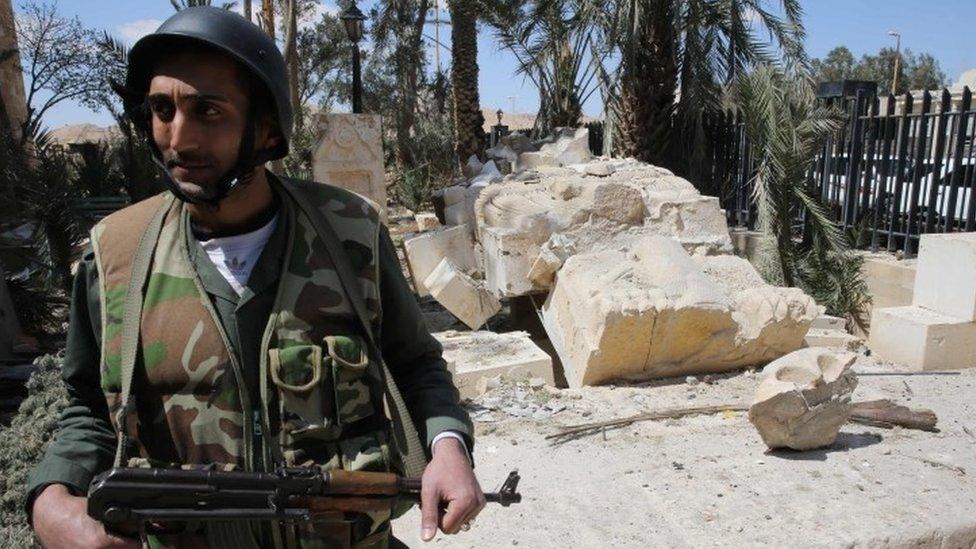
Syrian troops retook Palmyra last Sunday
Syrian troops have found a mass grave containing about 40 bodies in the city of Palmyra following its recapture from the Islamic State (IS) group, state news agency Sana reports.
The grave containing the bodies of men, women and children was uncovered on the north-eastern edge of the city.
Some had been beheaded while others had been shot, a military source told AFP.
Meanwhile fighting between rebels and state forces has erupted south of the city of Aleppo, monitors said.
The rebels, including the al-Qaeda-linked al-Nusra Front, captured strategic territory from the government, according to UK-based activist group the Syrian Observatory for Human Rights.
A nationwide "cessation of hostilities" has been in place for over a month but it excludes both the Nusra front and IS.
Inside the ancient city recaptured from IS
Recapture of Palmyra tightens noose on IS
Islamic State group: The full story
The bodies found in Palmyra have been transferred to a military hospital in the provincial capital Homs. Some have reportedly been identified.
Among those found, according to the AFP source, were soldiers, members of pro-regime militia and their relatives. Twenty-four of the victims were civilians, including three children, the source added.
Last Sunday, the Syrian army, backed by Russian forces, recaptured Palmyra and its world-famous complex of ancient ruins, which IS overran in May last year.
IS militants executed at least 280 people during their occupation of the city, according to the Syrian Observatory for Human Rights, a UK-based monitoring group.
They also caused extensive damage to the world-renowned antiquities site.
Correspondents say the recapture of Palmyra is one of the biggest setbacks for IS since it declared a caliphate across swathes of Syria and Iraq in 2014.
The discovery of mass graves in Palmyra reveals the "human suffering" during the occupation by IS, says Alan Johnston
The Syrian army says it will use Palmyra - which has a military airport - as a launch pad to expand operations against IS and cut its supply routes.
Syrian military sources say the army is targeting IS-held towns including al-Qaryatain, south-west of Palmyra, and Sukhnah towards the north-east.
Russia's six-month air campaign against opponents of President Bashar al-Assad has turned the tide of the five-year civil war in the Syrian leader's favour.
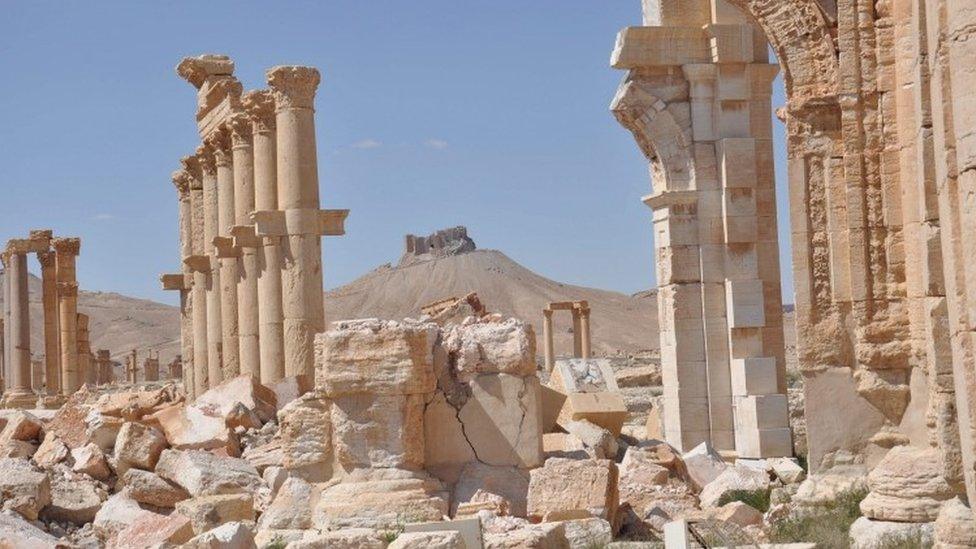
Palmyra's ancient ruins have been extensively damaged by IS
- Published1 April 2016
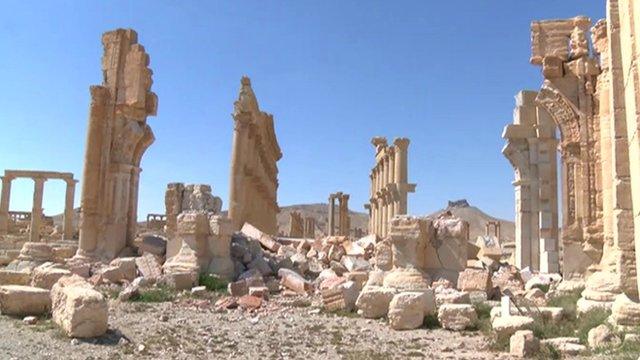
- Published28 March 2016
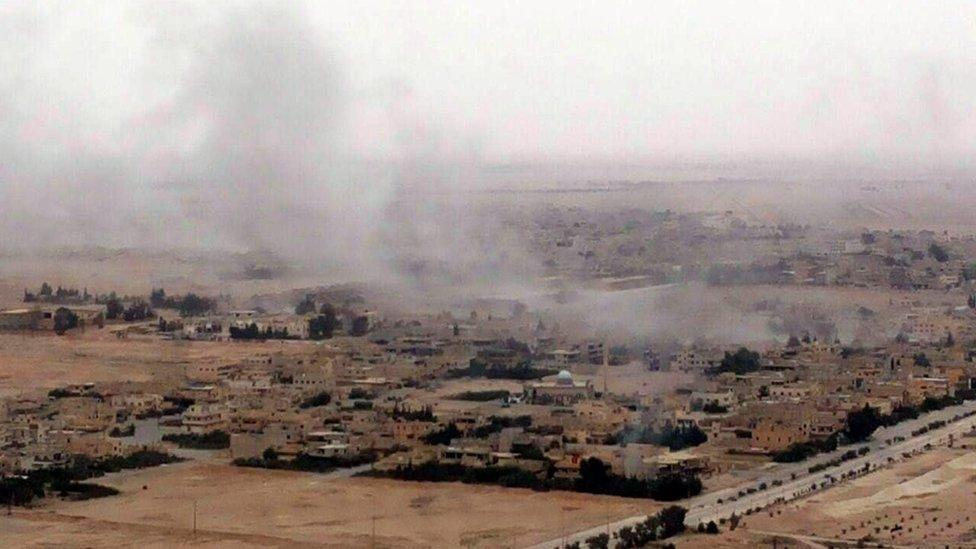
- Published17 October 2017
